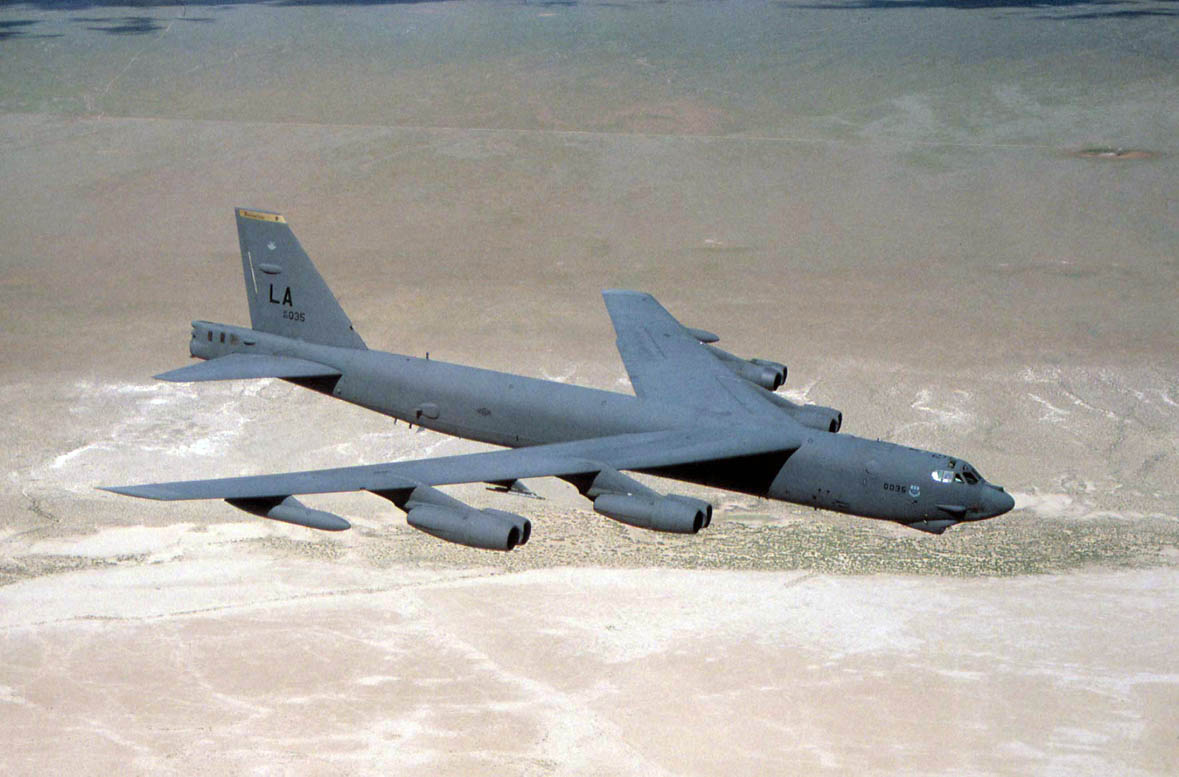21st Century Wire says…
Is Washington preparing to carpet bomb Raqqa? If so, what will be the ‘trigger’ for this boldly adroit military maneuver to deploy B-52 Bombers to the Middle East?
Back in Dec 2015, GOP contender Ted Cruz vowed he would “carpet bomb ISIS” if elected president (and to hell with any collateral damage). He recently repeated that call on FOX network’s Kelly File show.
“If I am elected president, we will defeat radical Islamic terrorism, and we will utterly destroy ISIS,” he said. “And yes that means carpet bombing them into oblivion.”

But it’s not Cruz ramping up the Pentagon’s military footprint – it’s Barack Obama who is the international aggressor, but he’s ‘leading from behind’ safely in the background in order to preserve his party’s fast-diminishing dovish allure in a delicate election year.
Regardless, the U.S. are desperate to save face in the Middle East after 5 years of failed policy and arming terrorists in Syria and northern Iraq while acting as if they were forming a Coalition to defeat the terrorists – a totally fraudulent narrative (yes, you read that correctly, and the evidence is now in).
Is this a sign of thing to come..?

In a conventional conflict, the B-52 can perform air interdiction, offensive counter-air and maritime operations. During Desert Storm, B-52s delivered 40 percent of all the weapons dropped by coalition forces. It is highly effective when used for ocean surveillance, and can assist the U.S. Navy in anti-ship and mine-laying operations. Two B-52s, in two hours, can monitor 140,000 square miles (364,000 square kilometers) of ocean surface. All B-52s are equipped with an electro-optical viewing system that uses platinum silicide forward-looking infrared and high resolution low-light-level television sensors to augment the targeting, battle assessment, flight safety and terrain-avoidance system, thus further improving its combat ability and low-level flight capability. (U.S. Air Force photo)
American B-52 Stratofortress bombers have been sent for their first Middle East operational deployment since the 1991 Gulf War 26 years ago. The aircraft are flying from Qatar to bomb Islamic State targets.
An undisclosed number of B-52s have arrived at the Al Udeid Air Base on Sunday, the US Air Force said.
“The B-52 will provide the coalition continued precision and deliver desired airpower effects,” Lt. Gen. Charles Q. Brown Jr., commander, US Air Forces Central Command said in the statement.
The B-52 is a long-range multi-purpose heavy bomber. The Central Command last used them during Operation Desert Storm against Saddam Hussein’s Iraq, when the aircraft flew sorties from Saudi Arabia.
The deployment is meant to replace a contingent of B-1 Lancer swing-wing bombers which departed the Middle East in January for maintenance and a series of upgrades, the US Army’s Stars and Stripes reported.
“The B-52 demonstrates our continued resolve to apply persistent pressure on Daesh and defend the region in any future contingency,” Brown said, referring to Islamic State by its Arabic-language acronym.
The deployment comes shortly after Russia used its long-range Tupolev Tu-22, Tu-95 and Tu-160 bombers to strike terrorist targets in Syria. The Russian aircraft flew from their home bases over the Caspian Sea, Iran and Iraq to reach the Syrian territory.
READ MORE PENTAGON NEWS AT: 21st Century Wire Pentagon Files















